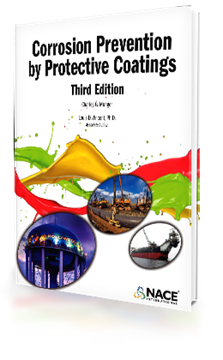Potential Theory Applied to Cathodic Protection Desgin
01542 CRUDE UNIT PERFORMANCE-BASED MONITORING FOR CORROSION AND FOULING CONTROL
01490 Twenty-Year Test Program - Stainless Steel Piping in NYC Water - The Beginning
Corrosion Prevention by Protective Coatings, Third Edition (e-Book)
High-performance coatings. Third edition. New technology. Reference tool for engineers, paint superintendents & maintenance personnel involved in the use of protective coatings to prevent corrosion. NACE E-BOOK
All NACE e-books are available as mobi files. The mobi is a common e-book format that can be opened by many e-book readers, though NACE suggests Kindle for optimized viewing. The Kindle app is available for free on Amazon for iOS (Apple devices), Android devices, MACs, and PCs at https://www.amazon.com/kindleapps
Once you download your e-books, they will automatically open in your Kindle app. To find your book in the future, open the app and click on library. This is where all your future NACE e-books (and all your other mobi e-books) will appear, in your personalized library.



